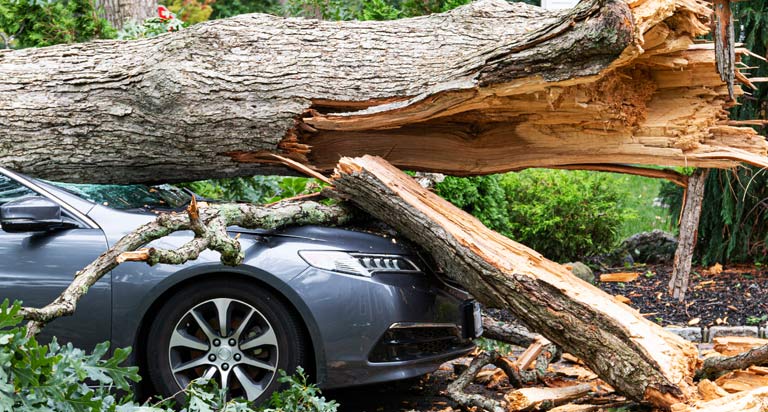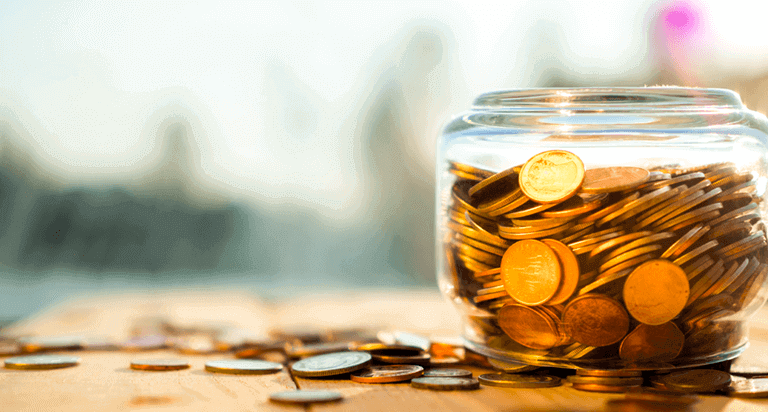Emergency Fund: What Is It & How To Build It


Highlights:
- An emergency fund helps you pay for unexpected costs so you don't have to rely on loans or credit cards.
- How much to have in an emergency fund varies from person to person. In an ideal world, it would cover about three to six months of expenses.
- Your emergency fund should be separate from your primary accounts, but easily accessible when you need it.
- Build an emergency fund by saving a specific amount from each paycheck, using automatic savings tools and cutting costs temporarily.
If you're like many people, every dollar of your paycheck is carefully allocated. When an unexpected expense comes up — your car breaks down, for example, or your dog needs an emergency visit to the vet — there isn't always room in the budget to pay the bill. That's when an emergency fund comes in handy; it covers surprise costs, so you don't have to go into debt.
Not sure where to start? With a manageable and consistent savings strategy, you can build an emergency fund over time without impacting your other financial goals.
What Is an Emergency Fund?
An emergency fund is a savings account that's intended to help you pay for unexpected expenses. Unlike other savings accounts, it isn't earmarked for a specific bill or goal.
Why Do I Need an Emergency Fund?
Unexpected expenses happen to everyone — you never know when your refrigerator will stop working or the pipes in the basement will burst. If you can't cover the bill, it could affect your finances or quality of life for months or years to come.
The emergency fund is there to take care of those surprise costs. That way, there's no need to take out a loan, put the charge on a credit card, or withdraw money from a retirement account. A cash reserve can also keep you afloat if you lose your job or need to take an unpaid leave of absence.
How Much Should You Have in an Emergency Fund?
The ideal emergency savings depends on your lifestyle and financial situation. Some experts recommend a minimum of $1,000, but that might not be enough if you get laid off or a major appliance goes out. Some people aim to save three to six months of living expenses, while others feel more comfortable with a fund that can sustain them for up to a year.
How much should your emergency fund be? Pick a goal that seems attainable to avoid feeling discouraged or overwhelmed — even $100 or $500 is better than nothing. Increase the amount slowly as your finances improve and you grow accustomed to saving.
How To Build an Emergency Fund
The most effective savings plan is one you can follow consistently. Here are different steps and strategies to get you started:
- Use a basic savings or money market account so that your money is accessible.
- Shop around for an account that pays you back - some savings accounts offer a small annual yield. High-yield savings accounts are a type of savings account with a higher-than-average annual percentage yield (APY).
- Only use the fund for unplanned emergencies such as: a house repair or large medical bill.
- Replenish the fund when you draw money out.
Budget & Create a Savings Plan
Before you do anything else, create a budget. Calculate your take-home pay (net pay after payroll taxes and deductions) and add it to one column. List all your fixed expenses such as: rent, utilities, insurance, debt payments, gas, and groceries. Also, list your variable (discretionary) spending for nonessential expenses like: entertainment and dining out.
Once you understand where your money is going, decide how much you can afford to save. Don't worry if that's only $10 or $20 from each paycheck in the beginning. The most important thing is to create a manageable plan and build a habit of saving. Plus, small amounts add up over time.
If you have room in the budget, consider opening an emergency savings account with a larger lump sum. Then, plan to contribute a set amount each month to help the balance grow.
Automate Savings Contributions
Automatic savings tools streamline the process of building an emergency fund, reducing your mental load. Most banks allow you to set up automatic transfers on a certain date each month. Some bank accounts can even round up every purchase and put the extra change in savings. Also, check with your employer to see if you can divert a portion of each check to a designated savings account.
Cut Expenses
Build your emergency fund faster by reducing your expenses — but instead of spending the extra money, put it in savings. These measures don't have to be permanent; a few months of belt-tightening can help you hit a savings goal.
Ways to cut costs include:
- Reducing restaurant meals by half.
- Pausing your subscription to one or two streaming services.
- Buy used/pre-owned — car, electronics, video games. Do not buy used — car seats, toothbrushes, or tacos.
- Switching to generic groceries and medications.
- Shopping around for more affordable car insurance or cell phone plans.
Where To Keep Emergency Funds?
You can keep emergency savings in any type of account, as long as the money is liquid. Ideally, you should be able to withdraw or transfer the funds within 24 to 48 hours. For most emergency funds, a high-yield savings account is a better option than a traditional checking or savings account. The higher annual percentage yield (APY) rates help your money earn more interest.
Have you struggled to build savings in the past? Consider setting up an emergency fund in an account that's separate from your main bank.
When To Use Emergency Savings
There are no hard-and-fast rules for using emergency funds. In general, it's a good idea to withdraw money only for nonnegotiable expenses. For example, you probably can't avoid repairing a dead car alternator — especially if you drive to work every day. However, you don't need to upgrade your TV if the old one is still in working condition.
Use your primary accounts to cover as much of the unexpected bills as possible. Then, make up the difference from the emergency savings.
How To Maintain an Emergency Fund
After withdrawing money from your emergency fund, try to replenish the savings as soon as possible. Increase your regular contributions for a few months, or look for ways to bring in extra income until the account balance grows.
Regardless of your financial situation, an emergency fund can be a lifesaver when unexpected expenses happen. It takes time to build a significant savings — but the sooner you get started, the better prepared you are for emergencies.
Get your free credit score today!
We get it, credit scores are important. A monthly free credit score & Equifax credit report are available with Equifax Core CreditTM. No credit card required.



